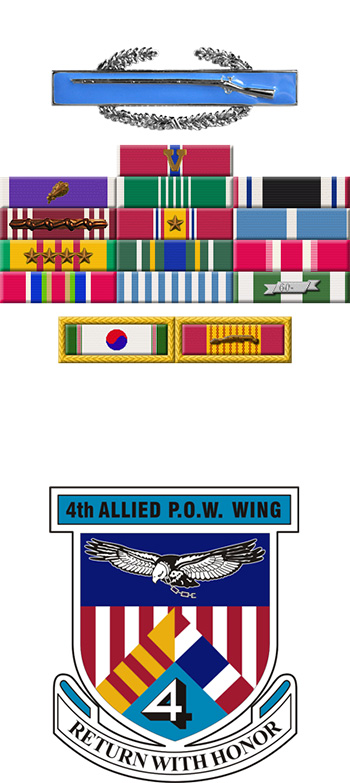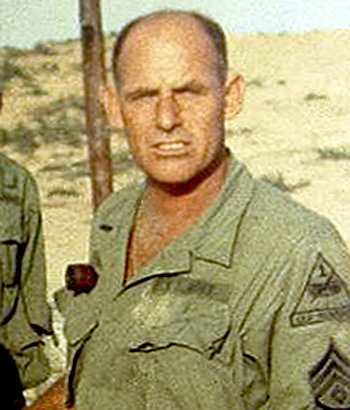
|
Richard F. Williams |
 |
|||
| Rank, Service | ||||
1st Sergeant E-8, U.S. Army |
||||
| Veteran of: | ||||
|
||||
| Tribute: | ||||
Richard Williams was born on March 10, 1927, in Santa Monica, California. He served aboard an armed escort vessel with the U.S. Merchant Marine from 1944 to 1945, and later enlisted in the U.S. Army on April 27, 1953. After attending basic training at Fort Ord, California, and Advanced Individual Training as a Tank Driver at Fort Knox, Kentucky, Sgt Williams served as a Tank Driver with Tank Company, 14th Infantry Regiment in South Korea from January to September 1954, followed by service as a Tank Gunner with Company A of the 73rd Tank Battalion in South Korea from September 1954 to June 1955. His next assignment was as a Tank Driver and then Tank Commander with Company B of the 72nd and then 40th Tank Battalion at Fort Lewis, Washington, from June 1955 to April 1957. SFC Williams served as a Tank Commander with Company B of the 1st Medium Tank Battalion at Fort Lewis from April to July 1957, and then as a Tank Commander with Company D, 2nd Battalion of the 2nd Armored Cavalry Regiment at Fort Meade, Maryland, and then deployed to West Germany, from July 1957 to October 1959. His next assignment was as a Tank Commander and Assistant Operations Sergeant with Company D, 3rd Medium Tank Battalion of the 37th Armored Regiment in West Germany from October 1959 to September 1961, followed by service as Assistant Section Chief with Service Battery, 1st Howitzer Battalion of the 92nd Artillery Regiment at Fort Bragg, North Carolina, from September 1961 to September 1962. He served as a Tank Commander with Company C, 2nd Medium Tank Battalion of the 40th Armored Regiment in South Korea from September 1962 to April 1963, and then as an Instructor with the NCO Academy for the 7th Infantry Division in South Korea from April to December 1963. PSG Williams served as an Instructor with the NCO Academy for 3rd Squadron of the 12th Cavalry Regiment in West Germany from December 1963 to September 1965, followed by service as 1st Sergeant of the NCO Academy with 1st Battalion of the 32nd Armored Regiment in West Germany from September 1965 to May 1966. His next assignment was as 1st Sergeant of Company A, 2nd Battalion of the 33rd Armored Regiment in West Germany from May to November 1966, and then as 1st Sergeant of 2nd Battalion, 13th Armored Regiment at Fort Hood, Texas, from December 1966 to April 1967. 1SG Williams served as 1st Sergeant of Company E, 15th Armored Regiment of the 1st Armored Division at Fort Hood from April to May 1967, followed by service as 1st Sergeant of Troop C, 1st Squadron of the 1st Cavalry Regiment at Fort Hood from May to August 1967, and then deployed with his unit to South Vietnam from August to December 1967. His next assignment was as 1st Sergeant of Company D, 3rd Battalion of the 21st Infantry Regiment in South Vietnam from December 1967 until he was captured and taken as a Prisoner of War on January 8, 1968. 1SG Williams died in captivity on September 18, 1968, but his remains were not returned to the United States until August 14, 1985. Richard Williams is buried at the Golden Gate National Cemetery in San Bruno, California. |
||||
|
||||

